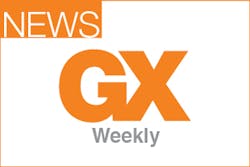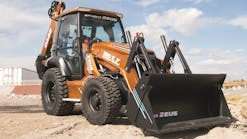February New Business Volume Up 2 Percent Month-to-month, Down 2 Percent Year-over-year, Down 7 Percent Year-to-date
Washington, DC, March 23, 2016— The Equipment Leasing and Finance Association’s (ELFA) Monthly Leasing and Finance Index (MLFI-25), which reports economic activity from 25 companies representing a cross section of the $1 trillion equipment finance sector, showed their overall new business volume for February was $6.1 billion, up 2 percent from new business volume in January. Volume was down 2 percent from $6.2 billion in February 2015. Year to date, cumulative new business volume decreased 7 percent compared to 2015.
Receivables over 30 days were 1.4 percent, up from 1.3 percent the previous month and up from 1.15 percent in the same period in 2015. Charge-offs were 0.37 percent, up from 0.26 percent the previous month.
Credit approvals totaled 79.2 percent in February, up from 78.0 percent in January. Total headcount for equipment finance companies was up 3.0 percent year over year.
Separately, the Equipment Leasing & Finance Foundation’s Monthly Confidence Index (MCI-EFI) for March is 51.6, an increase from the February index of 48.3.
ELFA President and CEO Ralph Petta said, “While February origination volume is virtually flat when compared to January and the year-earlier period, credit quality shows signs of deterioration, with delinquencies and charge-offs inching upward over the same time intervals. Both metrics are worth keeping a close eye on as economic uncertainty continues to act as a drag on U.S. businesses’ decisions to invest in capital equipment. However, this seems to run counter to the Foundation’s Monthly Confidence Index, which increased over the period from February to March.”
Dave Fate, President and CEO, Stonebriar Commercial Finance, said, “Trend lines for Q1 2016 are not too dissimilar to 2015; however, we expect commodity driven markets to be even more sensitive in 2016 due to shrinking capital resources, a slowing global economy and a more complex geo-political environment. We continue to see opportunities growing for non-regulated financial institutions operating in this challenging environment, especially leasing opportunities across all asset classes.”
About the ELFA’s MLFI-25
The MLFI-25 is the only index that reflects capex, or the volume of commercial equipment financed in the U.S. The MLFI-25 is released globally at 8 a.m. Eastern time from Washington, D.C., each month on the day before the U.S. Department of Commerce releases the durable goods report. The MLFI-25 is a financial indicator that complements the durable goods report and other economic indexes, including the Institute for Supply Management Index, which reports economic activity in the manufacturing sector. Together with the MLFI-25 these reports provide a complete view of the status of productive assets in the U.S. economy: equipment produced, acquired and financed.
The MLFI-25 is a time series that reflects two years of business activity for the 25 companies currently participating in the survey. The latest MLFI-25, including methodology and participants, is available at www.elfaonline.org/Data/MLFI/
MLFI-25 Methodology
The ELFA produces the MLFI-25 survey to help member organizations achieve competitive advantage by providing them with leading-edge research and benchmarking information to support strategic business decision making.
The MLFI-25 is a barometer of the trends in U.S. capital equipment investment. Five components are included in the survey: new business volume (originations), aging of receivables, charge-offs, credit approval ratios, (approved vs. submitted) and headcount for the equipment finance business.
The MLFI-25 measures monthly commercial equipment lease and loan activity as reported by participating ELFA member equipment finance companies representing a cross section of the equipment finance sector, including small ticket, middle-market, large ticket, bank, captive and independent leasing and finance companies. Based on hard survey data, the responses mirror the economic activity of the broader equipment finance sector and current business conditions nationally.








